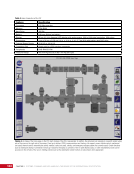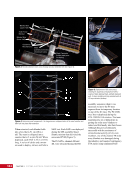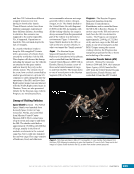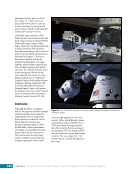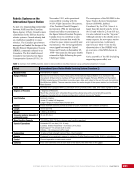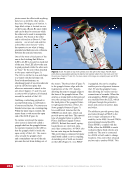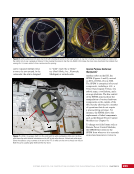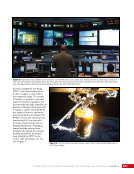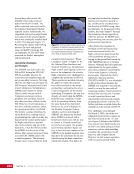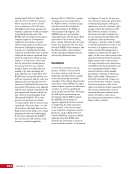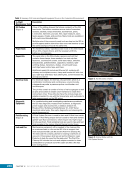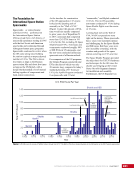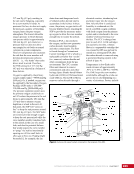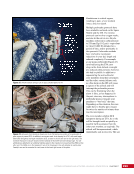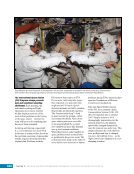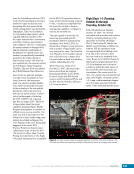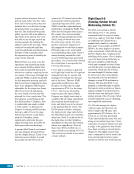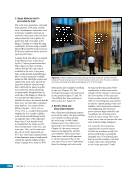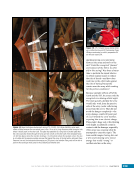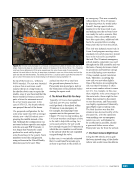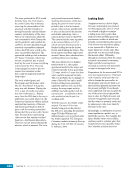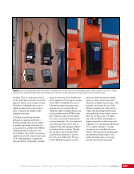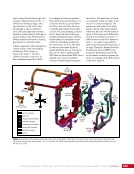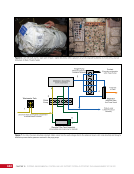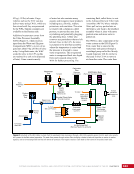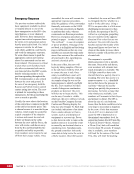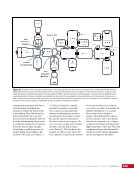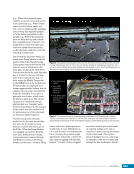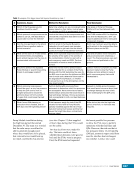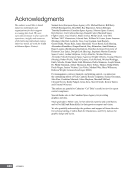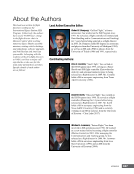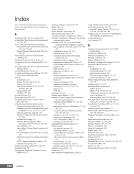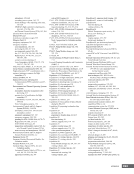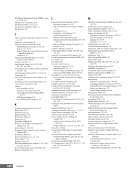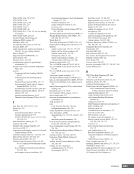CHAPTER 18 DAY IN THE LIFE: RISKY AND REWARDING SPACEWALKS—SPACE SHUTTLE MISSION STS-120/ISS-10A 324 A set of “overgloves” was planned into the EVA to provide for this sort of protection. Overgloves were mittens that fit over the index finger and thumb and covered the most-used glove areas. They were somewhat loose, thereby reducing the overall dexterity of the crew member’s hands even more than the spacesuit gloves. The team members expressed many concerns about using overgloves when doing fine detailed EVA work— they didn’t want Parazynski unable to perform the repair, snagging the overglove, or having hand fatigue. It was agreed that both Parazynski and Wheelock would wear these gloves, but when Parazynski got on the tip of the boom, he would remove his overgloves to perform the repair. Also on EVA 3, Parazynski’s spacesuit exhibited increasing temperatures due to a theorized failure of his sublimator (the component that rejects heat). The team declared his primary suit “no-go” for use on this upcoming EVA. The crew had to spend extra time to size a different spare suit to fit him. 9. Lack of Time To pull off this kind of repair spacewalk could take weeks of preparation in various ground facilities however, only a handful of days remained before the shuttle would run out of consumables and have to depart. Even simple EVAs are usually trained in the Neutral Buoyancy Laboratory several times before attempted in space. With so little time, a lot of “gut feel” from engineers, flight controllers, and experienced crew would have to be used to assess robotic motions and unknown array dynamics during the repair. Unfortunately, the same people who had worked so hard (i.e., electrical power experts, EVA teams), day and night, to come up with the SARJ EVA had to now work the solar array issue day and night until it was fixed. The array snag occurred on Tuesday, October 30, after EVA 3. On Wednesday, the team changed direction, completely dropping all work on the SARJ and instead working exclusively on the repair EVA. Highly optimistic thinking put the repair EVA on Friday, with a second EVA possible before undocking. Everyone felt the pressure to perform a successful repair before the shuttle and its boom departed. Flight Day 10 (Thursday, November 1) As Friday approached, flight controllers worked around the clock (many working 12 hours or more at a time), and things were coming together the night before the spacewalk. Almost. The team struggled to get the final procedures on board, the console positions in mission control were not feeling ready, and the team working the repair EVA details was exhausted. The flight directors involved recognized these clues as “links in the error chain” building up. Accident investigations often point at links in the error chain where a series of events led to the accident—if any one event had been recognized and stopped, the accident could have been prevented. In this case, the team was not meeting all of the deadlines, and people were heads-down writing the details to the point of not looking ahead to keep important big-picture issues in mind. Flight controllers might have pulled off the EVA that Friday, but that sick feeling that everything was not under control meant an error chain was perhaps developing. The team needed one more day. The flight directors and program management agreed to move the EVA from Friday to Saturday. This meant the array had to be repaired on a single EVA—no falling back on a second EVA since there would not be time for a follow- on EVA before the shuttle would have to undock with its remaining consumables to make it home. Flight Day 11 (Friday, November 2) With the EVA now scheduled for Saturday, the final conferences were conducted on Friday with the crew to discuss the repair details and robotics. EVA crew members had procedures on board that they printed out and taped to their cuff checklist so that Parazynski would have a graphic representation of where he would install the cufflinks (Figures 17-19). Tani and Wilson would be the station robotics crew members, and they had procedures on board and were feeling ready. The general order of events was to be as follows: 1. The IV crew would robotically position the tip of the boom near the port side of the truss, ready for the EV crew. 2. The EV crew would install the WIF Extender and a foot restraint onto the tip of the boom, and Parazynski would put his feet into the foot restraint.
Purchased by unknown, nofirst nolast From: Scampersandbox (scampersandbox.tizrapublisher.com)








































































































































